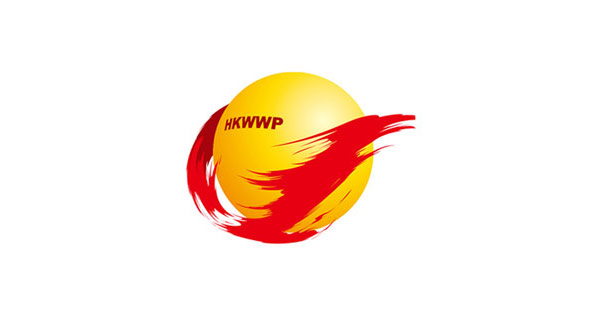 ■福島縣有一群主婦建立民間實驗室,每月向公眾發佈輻射讀數。圖為正在檢測食物樣本的媽媽。 網上圖片
■福島縣有一群主婦建立民間實驗室,每月向公眾發佈輻射讀數。圖為正在檢測食物樣本的媽媽。 網上圖片【原文】下文摘錄自香港《文匯報》2017年3月10日報道:
日本東北2011年3月11日發生黎克特制(Richter magnitude scale)9級大地震,觸發巨型海嘯(tsunami),並引發福島(Fukushima)核災難。
今年3月11日便是東日本大地震(Great East Japan Earthquake)6周年,隨着外界對大地震的記憶逐漸丟淡,福島縣磐城市(Iwaki)一群主婦仍然不忘核災對當地水土和食物造成的污染(contamination),她們自發建立民間實驗室(laboratory),在過去6年間憑小量科學知識,親身到市內各處檢測環境輻射(radiation)水平,希望保障下一代的生活環境。
民眾捐款撐買設備
磐城距離發生核災的福島第一核電站約60公里,雖然處於核電站半徑(radius)30公里以外的低危區域,日本政府和核電站營運商東京電力公司(Tokyo Electric Power Company)亦持續公佈當地輻射讀數(radiation reading),但這群母親認為,輻射無色(colorless)無味(tasteless)亦難以感受(untouchable),因此在2011年10月創立「磐城民間輻射測定室Tarachine」,每月向公眾發佈輻射讀數。
這批業餘的「實驗室專家」大部分都是家庭主婦,她們每日只會在實驗室工作數小時,以便騰出時間照顧孩子。在公眾捐款(donation)支持下,她們購入檢測食物輻射污染的設備,偵測食物中的銫-134和銫-137,收集伽瑪射線(gamma radiation)、鍶-90和氚等核災污染物的水平。即使有了硬件,她們亦需學習放射學(radiology)和有機化學(organic chemistry)等科學知識,才可妥善處理相關食物樣本。
當地家長:較政府數據可信
實驗室主管鈴木薰(Kaori Suzuki)笑言,相關數據一般由合資格的大學學生處理,但現在卻由兼職(amateur)科學家的主婦經手,「如果大學教授看見這裡一定會大嚇一跳。」然而有在實驗室工作的主婦指出,不少當地家長均認為實驗室的數據較政府數據可信(reliable),證明了她們的日常生活經驗更貼近一般市民,容易發現問題所在。
福島核災發生後,當局一直追蹤福島縣兒童的健康狀況,至今已發現174名兒童懷疑或證實患上甲狀腺癌(thyroid cancer),反映核災對人類健康的深遠(profound)影響。
鈴木指出,雖然實驗室只接受疏散區(exclusion zone)以外的食物作檢測樣本,樣本輻射水平一般較低,但她認為唯有藉檢測獲得實際數據,她們才可採取相應對策(take measure)。
另一名主婦指出,核災後一年各界都在關注當地情況,但如今人們已漸漸忘記核輻射問題,為保障下一代健康,她們必須這樣做。
Fukushima mothers become amateur scientists
【譯文】A deadly earthquake measuring 9.0 on the Richter magnitude scale off the northeastern coast of Japan on March 11, 2011 triggered a huge tsunami and the outbreak of the Fukushima nuclear disaster. This year marks the sixth anniversary of the Great East Japan Earthquake.
When people's memories of it are gradually fading, a group of women in the city of Iwaki still stay alert for the contamination of water and food caused by the nuclear accident. They have even set up a laboratory with limit scientific knowledge to measure the radiation levels around the city over the past 6 years, aiming to protect the living environment of the next generation.
Public donates for purchase of tools
Iwaki is located 60km away from the Fukushima nuclear plant; despite living in a relatively low-risk area that is 30km away from its radius, the mothers believed that radiation was colorless, tasteless and untouchable, so together they formed a non-profit organization "Iwaki Radiation Measuring Center-Tarachine" in October 2011, and published its findings on radiation readings monthly-even though the local authority and the electric power supplier Tokyo Electric Power Company had been doing the same.
These so-called "experts" were in fact ordinary housewives who spend just few hours at the laboratory each day in order to spare time to take care of their children. With the support of public donations, they were able to afford the necessary tools and equipment to measure the radioactive isotopes caesium 134 and 137 in food and collect data on gamma radiation, strontium 90 and tritium.
Apart from gaining the essential hardware, the mothers were also required to master certain scientific knowledge in radiology and organic chemistry etc. such that they could process the food samples properly.
Parents: more reliable than government
The laboratory's director Kaori Suzuki said that the relevant data should normally be handled by qualified college students, but they were now processed by an amateur group of scientists who are ordinary housewives, "it must be a surprise for college professors." Though less professional, the mothers said that according to the local parents, the data released by Tarachine were even more reliable than that of the authority, proving that their findings were more relevant to people's everyday lives and they were more sensitive to the potential risks.
The government started to conduct screenings on children's health after the nuclear accident. Unfortunately, so far 174 children in Fukushima prefecture have been suspected of having-or diagnosed with-thyroid cancer, which reflected the profound influence of nuclear disaster on the human body.
Suzuki pointed out that as the laboratory only accepted food samples for testing from outside the exclusion zone, most results indicated comparatively lower radiation levels, but only by collecting and knowing the actual data that the mothers could take appropriate measures.
Another woman said that people paid much attention to the local situation a year after the disaster, as time passed by, they had gradually forgotten about the radiation problems. For the sake of the next generation, they deemed it vital to keep doing the measurements.■龐嘉儀
Q&A
1. 史上規模最大的地震是?
2. 專家估計「3.11」日本大地震相等於多少顆原子彈的爆炸威力?
3. 用作量度核電廠事故安全風險的分級表是什麼?
4. 承上題,福島第一核電站事故屬於第幾級別?
1. 1960年9.5級智利大地震(Great Chilean Earthquake)
2. 1.1萬顆
3. 國際核事件分級表(International Nuclear Event Scale)
4. 最高級別的第7級(特大事故)

